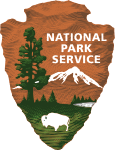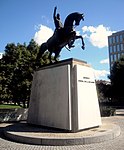United States Public Health Service Building

The United States Public Health Service Building, also known as the Federal Reserve Board - East Building and formerly the Department of the Interior - South Building, is a historic government office building. It is located at 1951 Constitution Avenue, Northwest, Washington, D.C., adjacent to the Eccles Building. It was the headquarters of the U.S. Public Health Service during 1933–1942 and 1946–1947; at other times it was the headquarters of the Combined Chiefs of Staff, Atomic Energy Commission, and National Science Foundation. From 1965 until 2018, it was used by the Department of the Interior, most prominently as the headquarters of the Bureau of Indian Affairs and Office of Surface Mining. In 2018, it was transferred to the Federal Reserve Board of Governors.
Excerpt from the Wikipedia article United States Public Health Service Building (License: CC BY-SA 3.0, Authors, Images).United States Public Health Service Building
Constitution Avenue Northwest, Washington
Geographical coordinates (GPS) Address External links Nearby Places Show on map
Geographical coordinates (GPS)
| Latitude | Longitude |
|---|---|
| N 38.892777777778 ° | E -77.044166666667 ° |
Address
Department of the Interior South Building
Constitution Avenue Northwest 1951
20551 Washington
District of Columbia, United States
Open on Google Maps










